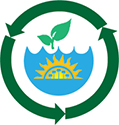Summer Irrigation Tips

Water conservation is a year-round job. Irrigate less during the rainy summer and cool winter seasons to preserve water resources for fall and spring droughts.The suggestions provided are arranged by mouth to help property managers and homeowners form good conservation habits all year round. All actions should comply with water restrictions in your area. Protecting Florida`s natural resources through environmentally friendly landscaping and lawn care.
Tips
- Five minutes of watering provides the ½ inch of water required by St. Augustine grass (most common type of grass).
- Sprinkler heads within an irrigation system should be the same brand and size in order to provide uniform distribution.
- Spacing of heads should also be reviewed in order to provide uniform distribution.
- Timers should be adjusted/programmed according to rainfall season. By adjusting timers, savings are also realized due to electricity not being used for irrigation pumps.
- The use of moisture measuring devices should be considered in order to shut off irrigation systems during rain events.
- Schedule of system operation should be programmed to irrigate in the early morning or evenings.
- The schedule of irrigation and location sprinkler heads should be adjusted to account for localized soil infiltration rates (The rate at which water percolates into the ground).
Watering Tip: Remember to water your lawn or garden only when necessary.
JANUARY: Temperature is cool and plant growth is limited. Irrigate only as needed or set irrigation controller for once every 2 weeks. Clean and repair irrigation components. Add mulch to landscapes
FEBRUARY: Irrigate only as needed or set irrigation controller for once every 2 weeks.
Add compost when renovating garden beds. Convert to micro-irrigation for tree/shrub beds.
Try starter kits from retailers. Renovate irrigation systems to establish separate zones for turf and annual flowers from trees and shrubs.
MARCH: Use slow release fertilizers to reduce flushes of growth that stimulate plant water demands. Set irrigation frequency to once per week. Check rain shut-off device to make sure it is functioning. Calibrate irrigation zones to apply ½ to ¾ inch of water per application.
Flush micro-irrigation systems and clean the filter. Check sprays emitters to make the water pattern overlap.
APRIL: Watering frequency should be based on plants needs. Install/expand hard scape walkways, patios decks-with pervious material. Plant drought-tolerant plants. Check and repair irrigation problems.
MAY: Consider enlarging mulched areas and reducing turf areas. Plant more trees.
When installing plants, group them together according to their water requirements. Check and
Repair irrigation problems.
JUNE: Use slow release fertilizers to reduce flushes of growth that stimulate plant water demand. Make sure the rain shut-off device is functioning properly. With the onset of the rainy
Season; adjust irrigation based on rainfall received. Consider rain barrels to capture water off roofs. Check and clean irrigation filter. Correct any irrigation problems.
JULY: The rainy season continues. Adjust irrigation controller to irrigate only as needed.
Disconnect irrigation to drought tolerant and native plants that are established and do not require
Supplemental irrigation. Make sure down spouts are directed into landscaped areas and not onto
Impervious surfaces. Make sure the rain shut-off device is working.
AUGUST: Adjust your irrigation system to account for rainfall. Check the rain shut-off
Device. Check irrigation system for leaks and malfunctions.
SEPTEMBER: Irrigate only according to plant needs. Plan landscape modification for
Coming cooler dryer months to save more water. Check and clean irrigation filter. Use slow
Release fertilizers to reduce flushes of growth that stimulate plant water demands.
OCTOBER: Adjust irrigation time clocks to make sure frequency is not more than once a week. Consider replacing some turf areas with drought – tolerant ground cover. Replenish mulch. Expand mulch areas. Landscape with drought-tolerant plants. Correct irrigation problems.
November: Make sure irrigation system is functioning properly. Convert tree/shrub beds to micro-irrigation and put them on separate zones from turf grass. Plant more for energy and water conservation. Check the rain-shut-off device.
December: Check and clean irrigation filter. Set irrigation frequency to once every 2 weeks Troubleshoot entire irrigation system and clean, adjust or replace malfunctioning components.
For additional tips and recommendations, visit:
https://www.miamidade.gov/global/water/water-conservation.page




